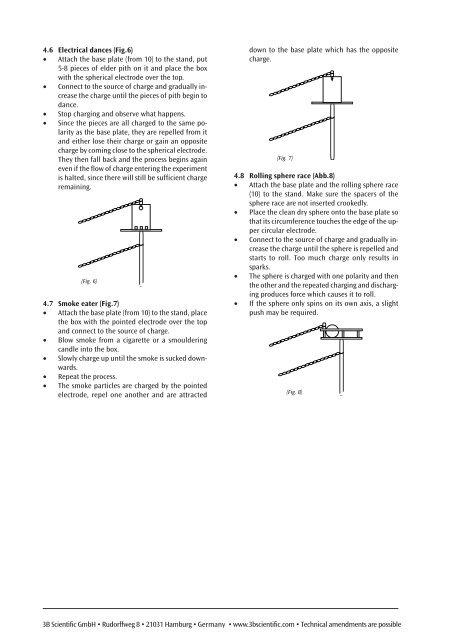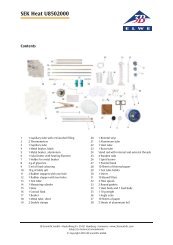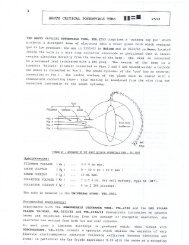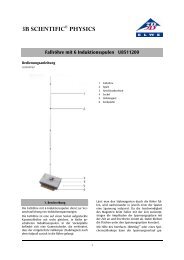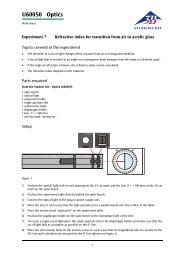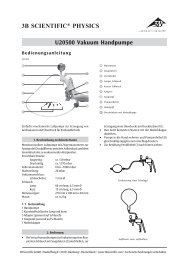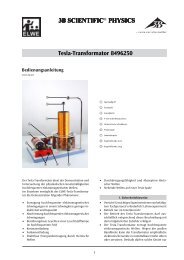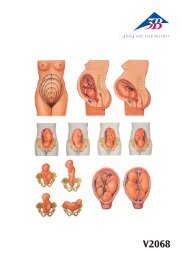U10170 Gerätesatz Elektrostatik.pmd
U10170 Gerätesatz Elektrostatik.pmd
U10170 Gerätesatz Elektrostatik.pmd
You also want an ePaper? Increase the reach of your titles
YUMPU automatically turns print PDFs into web optimized ePapers that Google loves.
4.6 Electrical dances (Fig.6)<br />
• Attach the base plate (from 10) to the stand, put<br />
5-8 pieces of elder pith on it and place the box<br />
with the spherical electrode over the top.<br />
• Connect to the source of charge and gradually increase<br />
the charge until the pieces of pith begin to<br />
dance.<br />
• Stop charging and observe what happens.<br />
• Since the pieces are all charged to the same polarity<br />
as the base plate, they are repelled from it<br />
and either lose their charge or gain an opposite<br />
charge by coming close to the spherical electrode.<br />
They then fall back and the process begins again<br />
even if the flow of charge entering the experiment<br />
is halted, since there will still be sufficient charge<br />
remaining.<br />
(Fig. 6)<br />
4.7 Smoke eater (Fig.7)<br />
• Attach the base plate (from 10) to the stand, place<br />
the box with the pointed electrode over the top<br />
and connect to the source of charge.<br />
• Blow smoke from a cigarette or a smouldering<br />
candle into the box.<br />
• Slowly charge up until the smoke is sucked downwards.<br />
• Repeat the process.<br />
• The smoke particles are charged by the pointed<br />
electrode, repel one another and are attracted<br />
down to the base plate which has the opposite<br />
charge.<br />
4.8 Rolling sphere race (Abb.8)<br />
• Attach the base plate and the rolling sphere race<br />
(10) to the stand. Make sure the spacers of the<br />
sphere race are not inserted crookedly.<br />
• Place the clean dry sphere onto the base plate so<br />
that its circumference touches the edge of the upper<br />
circular electrode.<br />
• Connect to the source of charge and gradually increase<br />
the charge until the sphere is repelled and<br />
starts to roll. Too much charge only results in<br />
sparks.<br />
• The sphere is charged with one polarity and then<br />
the other and the repeated charging and discharging<br />
produces force which causes it to roll.<br />
• If the sphere only spins on its own axis, a slight<br />
push may be required.<br />
3B Scientific GmbH Rudorffweg 8 21031 Hamburg Germany 6 www.3bscientific.com Technical amendments are possible<br />
(Fig. 7)<br />
(Fig. 8)


